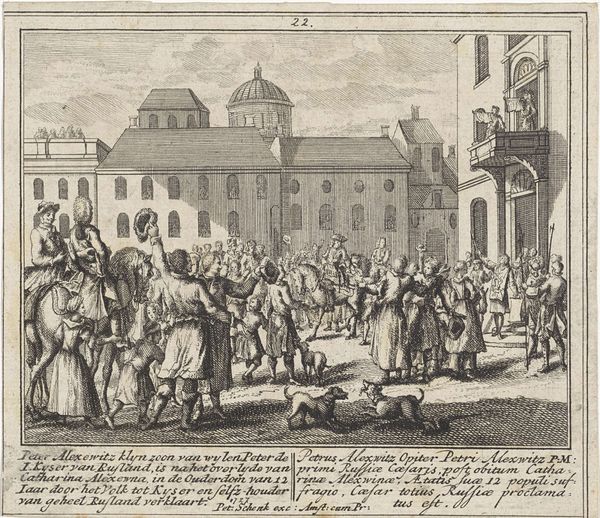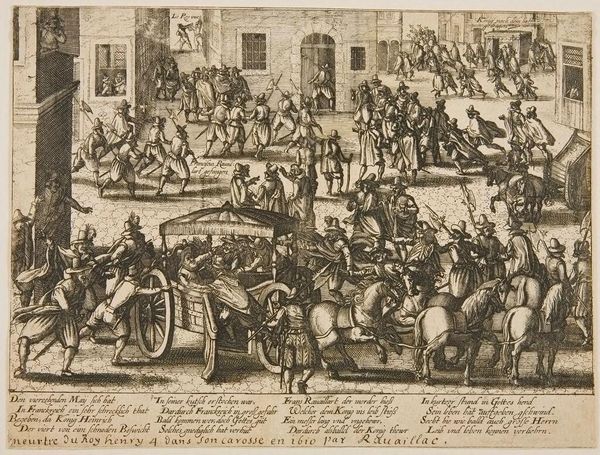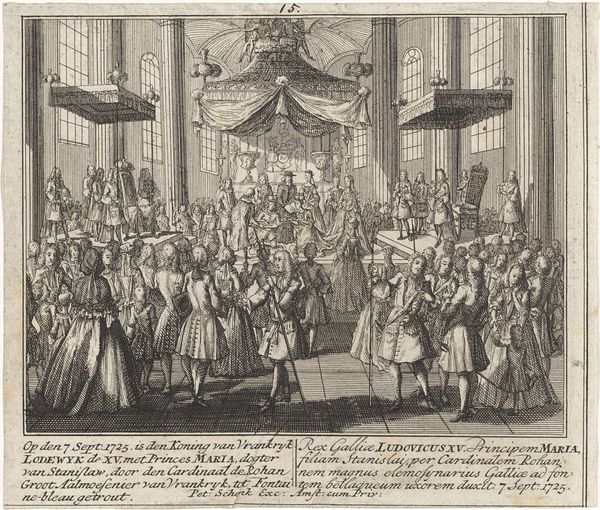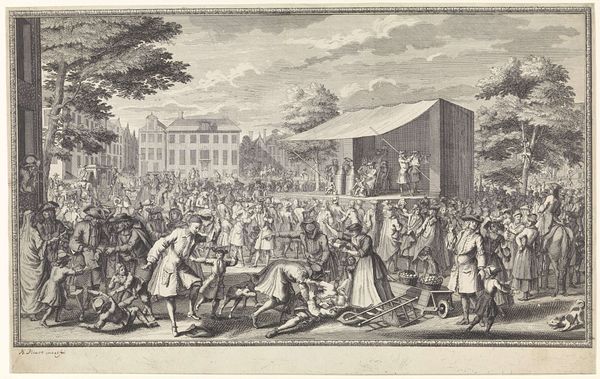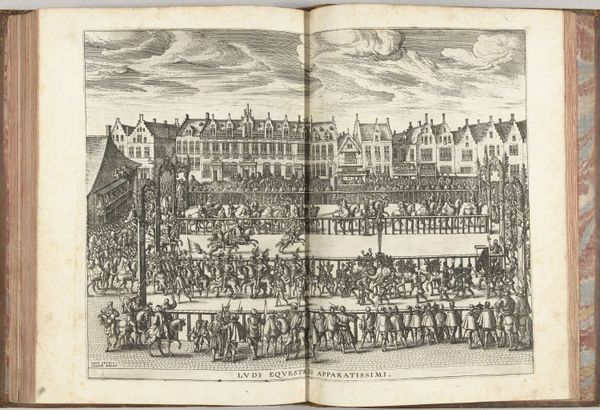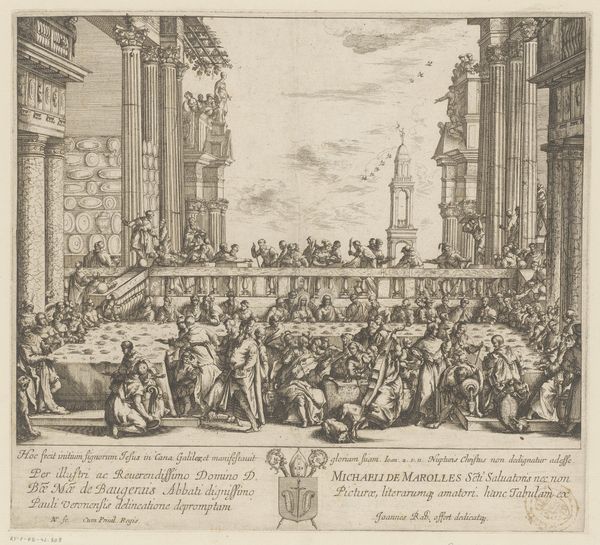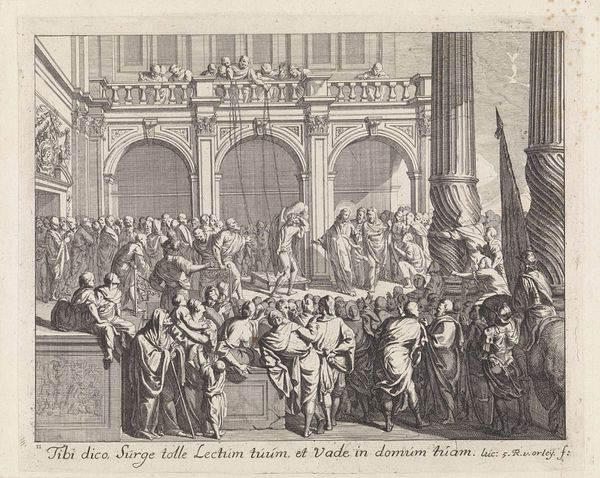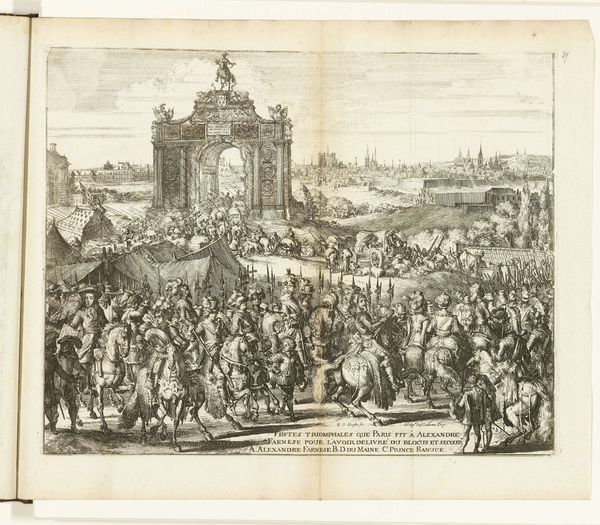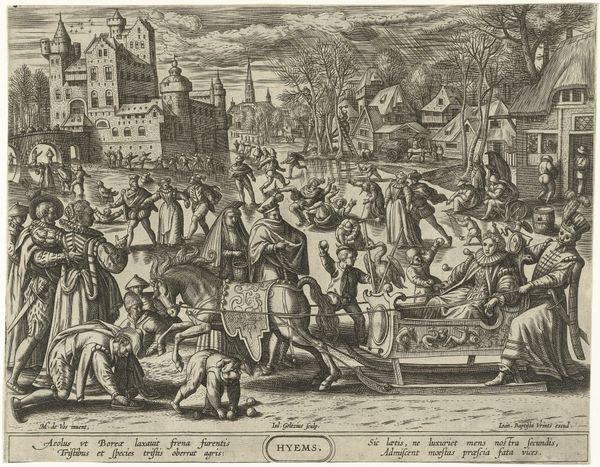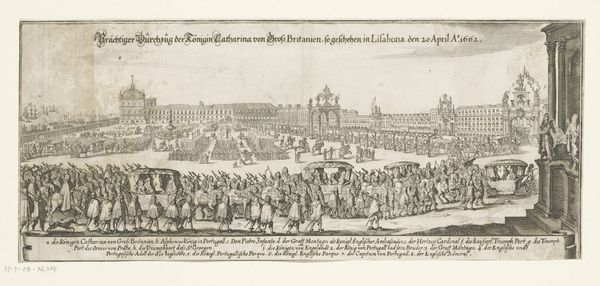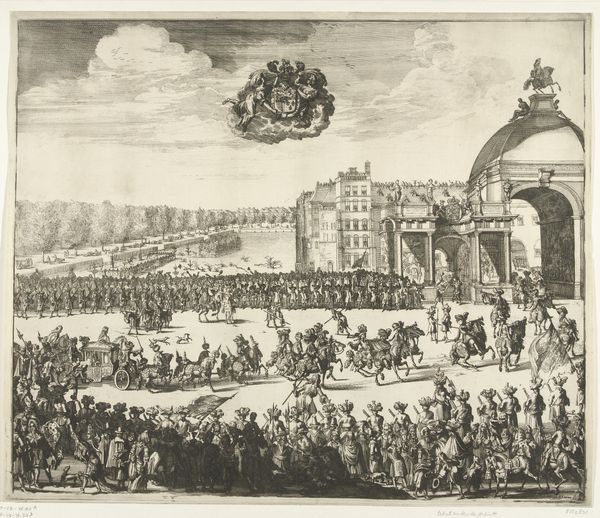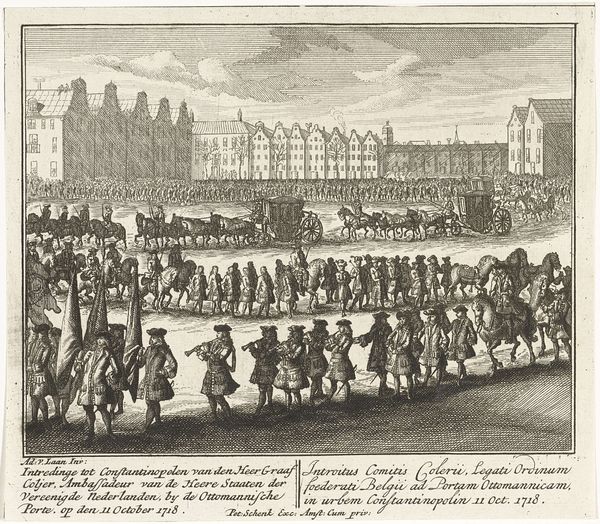
print, engraving
#
baroque
# print
#
cityscape
#
genre-painting
#
history-painting
#
engraving
Dimensions: height 155 mm, width 188 mm
Copyright: Rijks Museum: Open Domain
Editor: Here we have "Lijkstatie van George I, koning van Engeland, 1727", or "The Funeral Procession of George I, King of England, 1727," an engraving by Leonard Schenk dating from 1727 to 1729. It’s a very busy scene; my eye struggles to find a focus amid all the figures. What stands out to you? Curator: Note the emphasis on linear perspective, a structural device controlling our gaze, leading us through the crowd toward the architecture in the background. The foreground figures are etched with more detail, naturally diminishing in clarity as depth increases, reinforcing this perspectival recession. Editor: That makes sense. So the converging lines draw us into the depths of the image. Are you suggesting this technique is central to the work’s impact? Curator: Precisely. Consider how the artist employs hatching and cross-hatching to create tonal variations. See the darker areas in the foreground contrasting sharply with the lighter buildings. This modulation of light and shadow creates visual texture and depth, emphasizing the Baroque aesthetic through dramatic contrasts. It also directs the eye towards specific areas within the composition. Where does your eye go first and why? Editor: The funeral carriage in the center, because of the details and maybe because it is the…purpose? Is it too simple as an observation? Curator: Not at all! The interplay of light and shadow renders that area significant. Consider also, how the structural elements guide our interpretation. Editor: It’s fascinating how focusing on the artistic choices gives you a new appreciation. Curator: Indeed. Analyzing these formal elements—line, perspective, light—unlocks layers of meaning that might otherwise remain unseen.
Comments
No comments
Be the first to comment and join the conversation on the ultimate creative platform.

